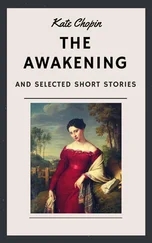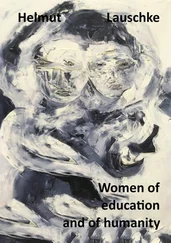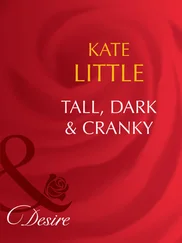Keith Grainger - Wine Faults and Flaws
Здесь есть возможность читать онлайн «Keith Grainger - Wine Faults and Flaws» — ознакомительный отрывок электронной книги совершенно бесплатно, а после прочтения отрывка купить полную версию. В некоторых случаях можно слушать аудио, скачать через торрент в формате fb2 и присутствует краткое содержание. Жанр: unrecognised, на английском языке. Описание произведения, (предисловие) а так же отзывы посетителей доступны на портале библиотеки ЛибКат.
- Название:Wine Faults and Flaws
- Автор:
- Жанр:
- Год:неизвестен
- ISBN:нет данных
- Рейтинг книги:4 / 5. Голосов: 1
-
Избранное:Добавить в избранное
- Отзывы:
-
Ваша оценка:
- 80
- 1
- 2
- 3
- 4
- 5
Wine Faults and Flaws: краткое содержание, описание и аннотация
Предлагаем к чтению аннотацию, описание, краткое содержание или предисловие (зависит от того, что написал сам автор книги «Wine Faults and Flaws»). Если вы не нашли необходимую информацию о книге — напишите в комментариях, мы постараемся отыскать её.
FLAWS
Wine Faults and Flaws: A Practical Guide
An essential guide to the faults and flaws that can affect wine
Wine Faults and Flaws — читать онлайн ознакомительный отрывок
Ниже представлен текст книги, разбитый по страницам. Система сохранения места последней прочитанной страницы, позволяет с удобством читать онлайн бесплатно книгу «Wine Faults and Flaws», без необходимости каждый раз заново искать на чём Вы остановились. Поставьте закладку, и сможете в любой момент перейти на страницу, на которой закончили чтение.
Интервал:
Закладка:
8 8 Chatonnet, P., Boutou, S., and Plana, A. (2014). Contamination of wines and spirits by phthalates: types of contaminants present, contamination sources and means of prevention. Food Additives and Contaminants A 1 https://doi.org/10.1080/19440049.2014.941947.
9 9 EUR‐Lex (2011). Regulation (EU) No 1169/2011 of the European Parliament And Of The Council of 25 October 2011 on the provision of food information to consumers, amending Regulations (EC) No 1924/2006 and (EC) No 1925/2006 of the European Parliament and of the Council, and repealing Commission Directive 87/250/EEC, Council Directive 90/496/EEC, Commission Directive 1999/10/EC, Directive 2000/13/EC of the European Parliament and of the Council, Commission Directives 2002/67/EC and 2008/5/EC and Commission Regulation (EC) No 608/2004. Official Journal of the European Union. L 304: 18‐63. https://eur-lex.europa.eu/legal-content/EN/TXT/PDF/?uri=CELEX:32011R1169&qid=1461072342439&from=EN(accessed 24 January 2020).
10 10 EUR‐Lex (2019). Commission Delegated Regulation (EU) 2019/33 of 17 October 2018 Supplementing Regulation (EU) No 1308/2013 of the European Parliament and of the Council as regards applications for protection of designations of origin, geographical indications and traditional terms in the wine sector, the objection procedure, restrictions of use, amendments to product specifications, cancellation of protection, and labelling and presentation. Official Journal of the European Union, L9/2. Available at: https://eur-lex.europa.eu/legal-content/EN/TXT/?uri=CELEX%3A32019R0033(accessed 24 January 2020).
11 11 ISO 5492 (2008). Sensory analysis – vocabulary. Switzerland: The International Organization for Standardization. https://www.iso.org/obp/ui/#iso:std:iso:5492:ed-2:v1:en(accessed 5 September 2019).
12 12 Malfeito‐Ferreira, M. (2018). Two decades of “horse sweat” taint and Brettanomyces yeasts in wine: where do we stand now? Beverages 4 (32) https://doi.org/10.3390/beverages4020032.
13 13 The Australian Wine Research Institute (AWRI) (2017) AWRI APEC Wine Regulatory Forum, May 11–12, 2017. Slides available at: http://mddb.apec.org/Documents/2017/SCSC/WRF/17_scsc_wrf_013.pdf(accessed 14 December 2019).
14 14 McKay, M., Bauer, F.F., Panzeri, V., and Buica, A. (2018). Testing the sensitivity of potential panelists for wine taint compounds using a simplified sensory strategy. Foods 7 (11) https://doi.org/10.3390/foods7110176.
15 15 Grainger, K. and Tattersall, H. (2016). Wine Production and Quality, 2e. Chichester: Wiley Blackwell.
16 16 Society of Sensory Professionals (2020). Triangle test. https://www.sensorysociety.org/knowledge/sspwiki/Pages/Triangle%20Test.aspx(accessed 13 June 2019).
17 17 ISO 13301 (2018). Sensory analysis ‐ methodology ‐ general guidance for measuring odour, flavour and taste detection thresholds by a three‐alternative forced‐choice (3‐AFC) procedure. Switzerland: The International Organization for Standardization. https://www.iso.org/obp/ui/#iso:std:iso:13301:ed-2:v1:en(accessed 5 June 2019).
18 18 E679‐04 (2011). Standard practice for determination of odor and taste thresholds by a forced‐choice ascending concentration series method of limits. West Conshohocken, PA: ASTM International. Available online (paywall): https://www.astm.org/Standards/E679.htm(accessed on 5 June 2019).
19 19 Fugelsang, K.C. and Edwards, C.G. (2007). Wine Microbiology – Practical Applications and Procedures, 2e. New York: Springer.
20 20 Avramova, M. (2017). Population genetics and diversity of the species Brettanomyces bruxellensis: a focus on sulphite tolerance. PhD thesis: Agricultural sciences. Université de Bordeaux.
21 21 Jolly, N.P., Varela, C., and Pretorius, I.S. (2014). Not your ordinary yeast: non‐Saccharomyces yeasts in wine production uncovered. FEMS Yeast Research 14 (2): 215–237. https://doi.org/10.1111/1567-1364.12111.
22 22 Smith, C. (2014). Postmodern Winemaking. Berkeley: University of California Press.
23 23 Liger‐Belair, G. and Villaume, S. (2011). Losses of dissolved CO2 through the cork stopper during Champagne aging: toward a multiparameter modelling. Journal of Agricultural and Food Chemistry 59: 4051–4056. https://doi.org/10.1021/jf104675s.
24 24 Wilkes, E. (2017). Is it the closure or the wine? Wine & Viticulture Journal: 22–25. https://www.awri.com.au/wp-content/uploads/2015/10/s1879-Wilkes-WVJ-31-6-2016.pdf.
25 25 International Organisation of Vine and Wine (2018). OIV statistical report on world vitiviniculture. http://www.oiv.int/public/medias/6371/oiv-statistical-report-on-world-vitiviniculture-2018.pdf(accessed 9 July 2019).
26 26 Perrotti‐Brown, L. (2015). Taste Like a Wine Critic: A Guide to Understanding Wine Quality. The Wine Advocate.
2 Wine Tasting
In this chapter, I consider wine tasting in general and how to detect faults and flaws using a structured tasting technique. The concept of primary, secondary, and tertiary aromas is explained. The faults and flaws that are indicated by individual characteristics perceived during a tasting assessment are noted, with pointers to Chapters 3–15 in which they are discussed. Some important odour and flavour compounds and their sensory detection thresholds are detailed, noting that sensory such thresholds vary from wine to wine according to the matrix and, of course, from taster to taster.
2.1 Introduction
There are two ways a fault or flaw in a wine may be detected: by laboratory analysis, or by the organoleptic or sensory method, i.e. tasting. It may be argued that, as wine is made for tasting and drinking, a ‘technical’ fault, that is not apparent to a trained and experienced taster, is unimportant unless the fault were to develop and manifest itself on a subsequent occasion or lead to product deterioration. Sensory detection thresholds for important ‘fault’ compounds are discussed in the succeeding chapters in this book. It should be pointed out that published literature and research papers are far from being in consensus on the sensory detection threshold of individual compounds. Some of the disparities may be due to the nature of the panels of tasters: trained, untrained, experienced, inexperienced, age, gender, cultural background, etc. In fact, although one might expect that wine tasting ‘experts’ would be very sensitive to common aromas and flavours, it has been noted that they can show high olfactory detection thresholds for some key wine compounds, which is far from ideal when assurance of wine quality depends on fault detection at low levels [1]. Another challenge lies in the use and understanding of tasting lexicons, aroma, and taste descriptors. Whether described odour categories are innate or learned depends on the influence of language on odour processing. The question may be raised as to whether olfactory description systems are basic linguistic arrangements based on the taster's experience and exposure to expert lexicons [2].
Even if the primary purpose of a tasting assessment is to determine possible faults, a taster must be able to undertake a complete and thorough assessment of the wine, and the techniques and structure of doing this to ensure that all characteristics are examined, as detailed in this chapter. Some fault compounds, particularly haloanisoles, should result in rejection by a professional taster, at any level. However, there are other ‘fault’ compounds whose presence, particularly at a low level, may not lead to the rejection of a wine. It will depend upon the matrix of the wine and the relationship with all the sensory characteristics, including the wine's structure and balance. Some characteristics are sought after as part of the identity of certain wines but may be unacceptable in others. For example, the ‘struck flint’ and smoky notes of benzenemethanethiol, also known as benzene mercaptan, are almost a trademark of a classic Pouilly‐Fumé (Sauvignon Blanc) from the Central Vineyards of the Loire valley. Such aromas would be unacceptable in a Vouvray (Chenin Blanc) from Touraine, further down the river, so context is crucial. Of course, wine tasting encompasses a degree, sometimes a large degree, of subjectivity but following a rigorous tasting structure, together with subsequent comparing notes and opinions with colleagues, helps the taster reach an honest and balanced assessment, including whether some characteristics are indeed faults or flaws.
Читать дальшеИнтервал:
Закладка:
Похожие книги на «Wine Faults and Flaws»
Представляем Вашему вниманию похожие книги на «Wine Faults and Flaws» списком для выбора. Мы отобрали схожую по названию и смыслу литературу в надежде предоставить читателям больше вариантов отыскать новые, интересные, ещё непрочитанные произведения.
Обсуждение, отзывы о книге «Wine Faults and Flaws» и просто собственные мнения читателей. Оставьте ваши комментарии, напишите, что Вы думаете о произведении, его смысле или главных героях. Укажите что конкретно понравилось, а что нет, и почему Вы так считаете.












